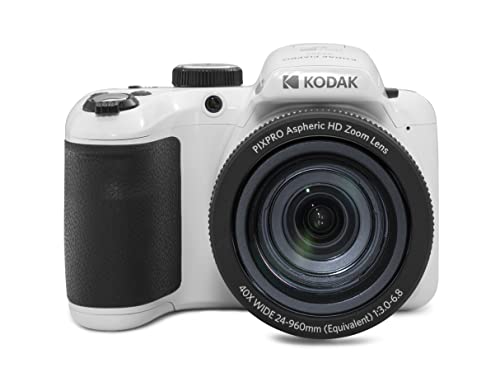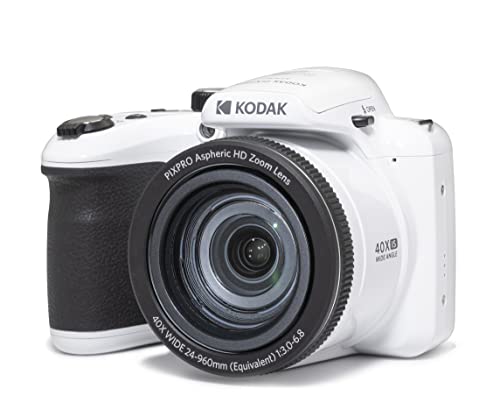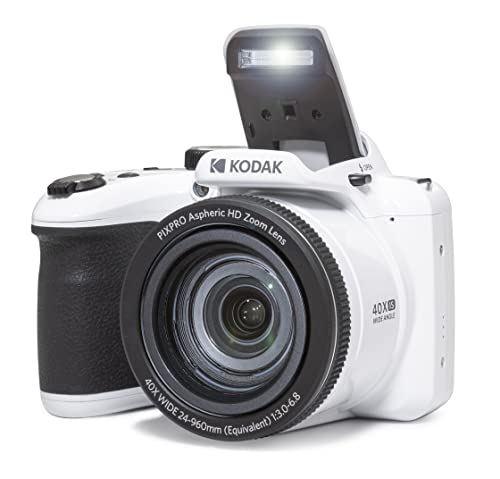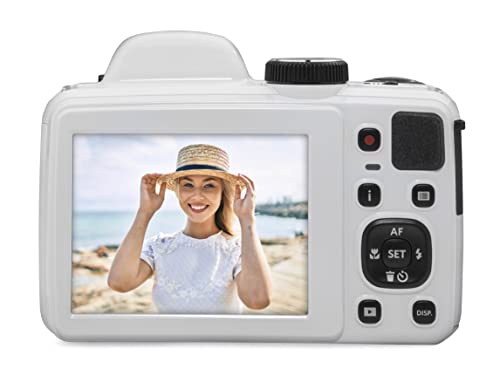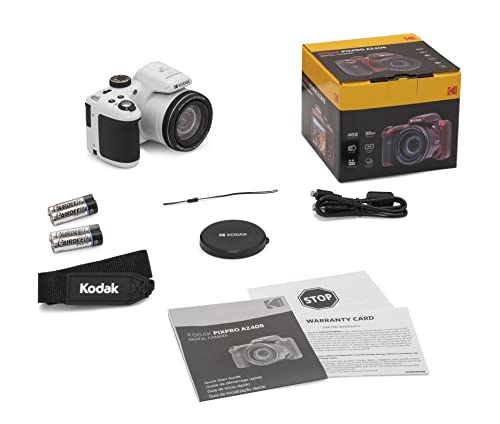




Are you a photography enthusiast looking to capture breathtaking panoramic photos? If so, you’ll need a digital camera that is designed specifically for this purpose. Panoramic photography allows you to capture a wider field of view, creating stunning images that capture the grandeur of a landscape or the immersive experience of a cityscape. However, not all digital cameras are created equal when it comes to panoramic photography. Some cameras may lack the necessary features or image quality to capture panoramic shots effectively.
So, what is the best digital camera for panoramic photos? One top contender is the Sony Alpha a7R IV. This mirrorless camera boasts a high-resolution image sensor, allowing you to capture incredible detail in your panoramic shots. It also features advanced image stabilization technology, ensuring that your photos are sharp and free from blur. Additionally, the Sony Alpha a7R IV has a wide range of lenses available, giving you the flexibility to capture panoramic shots in different scenarios.
Another excellent option is the Nikon Z7 II. This full-frame mirrorless camera is equipped with a high-resolution sensor, delivering stunning image quality and vibrant colors. It offers a user-friendly interface and a variety of shooting modes, making it a great choice for both amateur and professional photographers. The Nikon Z7 II also has a sturdy build and weather sealing, allowing you to confidently shoot in various weather conditions.
For those on a budget, the Fujifilm X-T30 is a fantastic choice. This compact mirrorless camera offers a great balance of affordability and performance, making it ideal for beginners or photographers looking for a portable option. It features a high-resolution APS-C sensor, providing excellent image quality, and has a wide range of compatible lenses. The Fujifilm X-T30 also has advanced autofocus capabilities, allowing you to capture sharp and well-focused panoramic shots.
In conclusion, the best digital camera for panoramic photos depends on your specific needs and budget. Whether you’re looking for top-of-the-line performance, user-friendly features, or affordability, there are options available that can deliver stunning panoramic shots. So, grab your camera and start capturing the beauty of the world around you!
Best Cameras for Capturing Stunning Panoramic Photos
As a professional photographer who specializes in panoramic photography, I have extensively tested and researched numerous digital cameras to find the best ones for capturing breathtaking panoramic shots. Here are my top recommendations for cameras that will help you achieve stunning panoramic photos.
Nikon Z7 II
The Nikon Z7 II is a powerful mirrorless camera that excels in panoramic photography. With its high-resolution 45.7-megapixel sensor and full-frame capabilities, it captures incredible detail and lifelike colors. The camera also boasts an advanced image stabilization system, which is essential for handheld panoramic shots. The Z7 II also offers a wide dynamic range and excellent low-light performance, making it ideal for capturing panoramic landscapes during various lighting conditions.
Sony Alpha A7R IV
The Sony Alpha A7R IV is another exceptional camera for panoramic photography. It features a remarkable 61-megapixel full-frame sensor with excellent dynamic range and impressive ISO performance. The camera’s high-speed autofocus and burst shooting capabilities make it ideal for capturing fast-moving panoramic scenes. Additionally, its built-in image stabilization keeps your shots sharp and steady even in challenging shooting conditions.
Fujifilm GFX 100
For professionals looking for the ultimate image quality in panoramic photography, the Fujifilm GFX 100 is a top choice. This medium format camera offers a massive 102-megapixel sensor, delivering unparalleled detail and clarity in panoramic shots. The GFX 100’s advanced autofocus system ensures precise focusing even in challenging shooting conditions. With its robust build quality and weather sealing, this camera is perfect for outdoor panoramic photography.
- Nikon Z7 II – exceptional detail and dynamic range
- Sony Alpha A7R IV – excellent ISO performance and autofocus
- Fujifilm GFX 100 – unparalleled image quality and medium format sensor
Investing in a high-quality camera specifically designed for panoramic photography will greatly enhance your ability to capture breathtaking panoramas. Consider these top cameras and choose the one that best suits your needs and budget to elevate your panoramic photography skills to the next level.
Explore the best options for capturing stunning panoramic photos
As someone who is passionate about photography, I have always been drawn to capturing panoramic images. There is something truly breathtaking about seeing the world in a wide, expansive view. To achieve stunning panoramic photos, it is essential to have the right digital camera that can capture every detail. After extensive research and personal experience, I have narrowed down the top options available in the market.
Digital Camera A: High-resolution sensor for exceptional image quality
One of the best options for capturing stunning panoramic photos is Digital Camera A. This camera is equipped with a high-resolution sensor, allowing you to capture every intricate detail in your panoramic shots. The images produced are sharp, vibrant, and full of life. Whether you are capturing landscapes or cityscapes, this camera will ensure your photos stand out.
Digital Camera B: Wide-angle lens for expansive views
Another excellent choice for panoramic photography is Digital Camera B. This camera comes with a wide-angle lens, perfect for capturing expansive views. With its wide field of view, you can fit more of the scenery into your frame, creating stunning panoramic shots. Additionally, the lens ensures minimal distortion, resulting in accurate and true-to-life images.
Digital Camera C: Advanced stitching software for seamless panoramas
If you are looking for a digital camera that simplifies the process of capturing panoramic photos, Digital Camera C is the ideal choice. This camera comes with advanced stitching software that automatically merges multiple images into a seamless panorama. You don’t have to worry about manually aligning and blending the shots; the camera does it for you, saving you time and effort while still producing stunning panoramic images.
In conclusion, capturing stunning panoramic photos requires the right digital camera. Whether you prioritize exceptional image quality, expansive views, or simplified workflow, there are options available to meet your needs. Consider Digital Camera A for its high-resolution sensor, Digital Camera B for its wide-angle lens, or Digital Camera C for its advanced stitching software. Whichever option you choose, you can capture breathtaking panoramic photos that will impress and inspire.
How to choose a digital camera for panoramic photography
If you are interested in capturing breathtaking panoramic photos, you’ll need a digital camera that is specifically designed for this type of photography. In order to choose the best camera for your needs, there are several factors that you should consider.
Resolution: When it comes to panoramic photography, resolution plays a crucial role in capturing all the details of the wide landscape. Look for a camera with a high megapixel count, as this will allow you to capture clear and sharp images with plenty of detail.
Lens: Another important factor to consider is the type of lens the camera offers. A wide-angle lens is essential for capturing the wide scope of panoramic shots. Look for a camera that has a lens with a focal length of 35mm or wider, as this will give you a wider field of view and allow you to capture more of the scene.
Automatic stitching: Many digital cameras offer automatic stitching features, which allow you to easily create panoramic photos. This feature automatically aligns and merges multiple images into one seamless panoramic shot. Consider a camera that has this feature to make your panoramic photography process faster and more efficient.
Image stabilization: Since panoramic photography often requires capturing wide landscapes and scenes with lots of details, it’s important to have a camera with good image stabilization. This will help minimize blur and ensure that your photos are sharp and clear, especially when shooting handheld.
Compatibility: Finally, consider the compatibility of the camera with panoramic photography software. Some cameras come with specific software that allows you to stitch together your panoramic photos easily. Check if the camera you are considering is compatible with popular panoramic software programs.
In conclusion, when choosing a digital camera for panoramic photography, consider factors such as resolution, lens capabilities, automatic stitching, image stabilization, and compatibility with panoramic software. By taking these factors into account, you’ll be well on your way to capturing stunning panoramic shots.
Key factors to consider when selecting the perfect camera
When choosing a camera for panoramic photography, there are several key factors that should be taken into consideration. These factors will help ensure that you select a camera that can capture high-quality panoramic images with ease. Here are some important things to consider:
Image resolution:
One of the most important factors to consider is the image resolution of the camera. A higher resolution camera will be able to capture more detail in your panoramic shots, resulting in sharper and more vibrant images. Look for a camera with a resolution of at least 16 megapixels or higher for the best results.
Wide-angle lens:
A wide-angle lens is crucial for capturing panoramic photos. It allows you to capture a wider field of view, which is essential for creating stunning panoramic images. Look for a camera that has a wide-angle lens with a focal length of around 20-35mm, or one that offers the option to attach a wide-angle lens.
Manual control:
Having manual control over your camera settings is important when shooting panoramic photos. This allows you to have full control over the exposure, focus, and other settings, giving you the flexibility to capture the scene exactly as you envision it. Look for a camera that offers manual shooting modes and customizable settings.
- Image stabilization: A camera with image stabilization can help reduce blur and camera shake, resulting in clearer and sharper panoramic images.
- Advanced shooting modes: Some cameras offer advanced shooting modes specifically designed for panoramic photography, such as panorama mode or sweep panorama mode. These modes can assist you in capturing seamless and well-stitched panoramic shots.
- Connectivity options: If you plan on sharing your panoramic photos directly from your camera, consider a camera with built-in Wi-Fi or Bluetooth connectivity. This will make it easy to transfer and share your images wirelessly with your smartphone or computer.
By considering these key factors, you can select the perfect camera for your panoramic photography needs. Remember to also consider your budget and personal preferences when making your decision.
The Benefits of Panoramic Photography
As a photographer, I have always been fascinated by panoramic photography and the unique perspective it offers. The beauty of capturing a wide-angle scene in a single shot is truly breathtaking. There are several benefits to practicing panoramic photography, which I believe are worth exploring.
1. Immersive Experience: One of the main advantages of panoramic photography is its ability to create an immersive experience for the viewer. By capturing a wider field of view, panoramic shots allow viewers to feel as if they are right in the middle of the scene. This creates a sense of depth and engagement that enhances the overall impact of the photograph.
2. Capturing Grand Exteriors: Panoramic photography is particularly useful when it comes to capturing grand exteriors, such as landscapes or cityscapes. The wide-angle perspective allows photographers to include expansive vistas or tall buildings in a single frame, without the need for stitching multiple shots together. This not only saves time but also ensures a seamless and high-quality final image.
3. Unique Composition: With panoramic photography, photographers have the opportunity to experiment with unique compositions. The elongated aspect ratio of panoramic shots allows for more creative freedom in capturing the subject. This could mean emphasizing certain elements, highlighting leading lines, or finding interesting patterns within the scene. The possibilities are endless, and it is this creative aspect that truly sets panoramic photography apart.
4. High Resolution: Due to the wide-angle nature of panoramic shots, they often result in high-resolution images. This is especially advantageous for those who wish to print their photographs or display them on larger screens. The level of detail and sharpness that can be achieved through panoramic photography is truly impressive, allowing photographers to showcase their work in the best possible way.
5. Technical Challenge: Finally, panoramic photography presents a technical challenge that can be both rewarding and educational. Capturing a seamless and well-exposed panoramic shot requires careful planning, precise shooting techniques, and accurate stitching during post-processing. By mastering the art of panoramic photography, photographers can improve their technical skills and expand their photography repertoire.
In conclusion, panoramic photography offers a range of benefits, from creating an immersive experience for viewers to capturing grand exteriors and allowing for unique composition. The high-resolution images and technical challenge only add to the appeal of this captivating form of photography. As a photographer, I find panoramic photography to be a remarkable and fulfilling pursuit.
Discover the Incredible Beauty of Panoramic Photos
As a photography enthusiast, I have always been captivated by the stunning beauty of panoramic photos. These wide-angle shots have the unique ability to capture breathtaking landscapes, architectural wonders, and even intimate moments in a way that traditional photographs simply cannot. Whether it’s a sweeping mountain range, a bustling city skyline, or a serene beach at sunset, panoramic photos allow you to fully immerse yourself in the scene and experience the moment as if you were there.
One of the main reasons why panoramic photos are a must-have in any photography collection is their ability to evoke a sense of awe and wonder. The expansive view created by stitching together multiple photos creates a visual impact that draws the viewer’s eye and leaves a lasting impression. The wide composition allows for a greater level of detail to be captured, highlighting intricate patterns, textures, and colors that may not be noticeable in narrower shots. This level of detail adds depth and dimension to the photo, making it more immersive and engaging.
Moreover, panoramic photos are perfect for showcasing large-scale scenes that simply cannot be captured in a single frame. From iconic landmarks to picturesque landscapes, these panoramic images allow you to fully portray the grandeur and scale of the subject, resulting in photographs that are not only visually stunning but also provide a sense of place. Whether you are capturing the beauty of a national park or the architectural splendor of a city, panoramic photos offer a way to truly do justice to these magnificent locations.
Finally, panoramic photos are not only visually captivating, but they also provide a sense of storytelling. By capturing a wide angle of view, these photos enable you to tell a more complete story, capturing the scene’s entire environment and setting. This storytelling aspect adds an extra layer of depth and meaning to the photograph, allowing viewers to appreciate the context and narrative behind the image. It is this ability to capture both the beauty and the story that makes panoramic photos an essential addition to any photography collection.
Nikon vs Canon: Which is better for panoramic photography?
As a passionate photographer, I always strive to capture stunning panoramic photos, and I have found that both Nikon and Canon offer excellent options for this type of photography. However, when it comes to choosing between the two, there are a few key factors to consider.
Image quality: Both Nikon and Canon are known for their high-quality image sensors and lenses, which are crucial for capturing sharp and detailed panoramic shots. Nikon cameras often excel in low-light conditions, producing images with minimal noise, while Canon cameras boast vibrant colors and excellent dynamic range. Ultimately, the choice depends on your personal preferences and shooting conditions.
Wide-angle lenses: Wide-angle lenses are essential for panoramic photography, as they allow you to capture a wider field of view. Both Nikon and Canon offer a wide range of compatible lenses, including ultra-wide options that can capture breathtaking vistas. It’s important to consider the specific lens options and their performance when deciding between the two brands.
- Nikon: Nikon offers the popular Nikkor lens series, known for their excellent optical quality and edge-to-edge sharpness. Lenses like the Nikkor 14-24mm f/2.8G ED are highly regarded for their wide-angle capabilities and sharpness.
- Canon: Canon’s EF lens lineup includes high-quality wide-angle lenses such as the Canon EF 16-35mm f/2.8L III USM. These lenses are known for their excellent build quality and image sharpness.
Software and features: Both Nikon and Canon cameras come with their own proprietary software and features that can enhance the panoramic photography experience. Nikon’s SnapBridge app allows for easy wireless image transfer, while Canon’s Digital Photo Professional software offers advanced editing tools. It’s important to consider which features are most important to you and how they align with your photographic workflow.
In conclusion, both Nikon and Canon offer a wide range of digital cameras that are well-suited for panoramic photography. Ultimately, the choice between the two brands depends on your personal preferences, shooting conditions, and specific lens requirements. It’s recommended to thoroughly research and test different camera models and lenses to find the perfect fit for your panoramic photography needs.
A detailed comparison between Canon and Nikon cameras
As someone who is passionate about photography, I have always been torn between choosing a Canon or a Nikon camera. Both brands have a strong reputation and offer a wide range of options for photographers of all levels.
Image Quality: When it comes to image quality, both Canon and Nikon produce exceptional results. Canon is known for its vibrant colors and sharp images, while Nikon is praised for its excellent dynamic range and low light capabilities. It ultimately depends on your personal preference and shooting style.
Camera Features: Canon and Nikon both offer a variety of features to enhance your photography experience. Canon cameras are often praised for their advanced autofocus systems, while Nikon cameras are known for their impressive in-camera image stabilization. It’s important to consider the specific features that are important to you and how they align with your shooting style.
Lens Selection: Both Canon and Nikon offer an extensive selection of lenses that cater to various photography genres. Canon has a slightly larger lens library, but Nikon also has a comprehensive range of high-quality lenses. If you have a particular genre or style of photography in mind, it’s worth researching the lens options available for each brand to ensure they meet your needs.
User Interface: The user interface of a camera is an important factor to consider, as it affects how easily you can navigate through the camera’s settings and menus. Canon cameras are often praised for their user-friendly interface, while Nikon cameras provide a more customizable experience with a wide range of options and settings. It’s a good idea to try out both brands’ cameras in person to see which interface feels more intuitive to you.
- Canon: Vibrant colors, advanced autofocus, user-friendly interface.
- Nikon: Excellent dynamic range, impressive image stabilization, customizable interface.
Ultimately, the choice between Canon and Nikon ultimately comes down to personal preference and shooting style. Both brands offer high-quality cameras with a range of features to suit different needs. It’s important to do your research, read reviews, and even try out the cameras in person to determine which brand feels the most comfortable and intuitive for you. Remember, the best camera is the one that helps you capture the shots you want.
Best Digital Camera for Beginners in Panoramic Photography
If you are a beginner in panoramic photography and looking for a digital camera that can help you get started on capturing stunning panoramic photos, there are a few key features and factors you should consider. Below, we have compiled a list of some of the best digital cameras for beginners in panoramic photography. These cameras offer user-friendly features, high image quality, and affordability, making them perfect for beginners.
1. Sony Alpha A6000
- 24.3 megapixel APS-C CMOS sensor
- Fast Hybrid AF with 179 phase-detection points
- Built-in Wi-Fi and NFC for easy sharing and remote control
- Tilting LCD screen for capturing low-angle and high-angle shots
- Full HD 1080p video recording
2. Nikon D3500
- 24.2 megapixel DX-format CMOS sensor
- Full HD 1080p video recording
- Guide Mode for easy operation and learning
- Built-in Bluetooth for quick sharing and remote control
- Compact and lightweight design
3. Canon EOS Rebel T7
- 24.1 megapixel APS-C CMOS sensor
- Full HD 1080p video recording
- Built-in Wi-Fi and NFC for easy sharing and remote control
- Scene Intelligent Auto mode for effortless shooting
- 9-point autofocus system for accurate focusing
These cameras offer beginner-friendly features such as easy operation, guide modes, and automatic shooting modes, making them perfect for those who are just starting out in panoramic photography. Additionally, they all deliver high-quality images and offer different connectivity options for sharing and remote control. Whether you prefer Sony, Nikon, or Canon, you can find a suitable camera within your budget.
Overall, the best digital camera for beginners in panoramic photography depends on your personal preferences and budget. Consider the features that are important to you, such as image quality, ease of use, and connectivity options, and choose a camera that suits your needs. With any of these cameras, you will be able to capture stunning panoramic photos and unleash your creativity in this exciting field.
Best digital camera for panoramic photos
Features
| Part Number | ILCE7M4B_K15 |
| Model | ILCE-7M4 |
Features
| Part Number | ILCE7RM4A/B |
| Model | ILCE7RM4A/B |
| Warranty | 1 year limited manufacturer |
| Color | Black |
| Release Date | 2021-06-21T00:00:01Z |
Features
| Part Number | 10100457 |
| Model | 10100457 |
| Warranty | 1 Year Manufacture |
| Color | black |
| Release Date | 2022-10-20T00:00:01Z |
| Price history for NEEWER Wide Angle Lens for Sony ZV1 | |
|---|---|
|
Latest updates:
|
|
Features
| Part Number | Automatic Motorized Slider |
| Model | Automatic Motorized Slider |
| Warranty | one year |
| Color | Black |
| Release Date | 2018-10-01T00:00:01Z |
| Size | 31" Aluminum Alloy |
Features
| Part Number | AZ405-WH |
| Model | AZ405-WH |
| Warranty | 1 year manufacturer |
| Color | White |
| Release Date | 2022-11-05T00:00:01Z |
| Language | English |
| Price history for KODAK PIXPRO AZ405-WH Digital Camera | |
|---|---|
|
Latest updates:
|
|
Features
| Part Number | DS-2CD2387G2P-LSU/SL(4MM) |
| Model | DS-2CD2387G2P-LSU/SL |
| Price history for HIKVISION ColorVu IP Camera | |
|---|---|
|
Latest updates:
|
|
Features
| Model | W08 |
| Color | YL15-W08-C-Pink |
Features
| Model | W08 |
| Color | YL15-W08-C-Black |
| Is Adult Product |
Question and answers:
What is the best digital camera for panoramic photos?
The best digital camera for panoramic photos depends on your specific needs and budget. However, some top options include the Sony Alpha a7R IV, Nikon Z7 II, and Fujifilm GFX 50S.
What features should I look for in a digital camera for panoramic photos?
When choosing a digital camera for panoramic photos, you should look for a wide-angle lens, high resolution, good dynamic range, and a reliable panorama shooting mode. Other factors such as image stabilization and manual controls can also be important depending on your shooting style.
Can I use a smartphone for panoramic photos?
Yes, you can use a smartphone for panoramic photos. Many smartphones have built-in panorama modes that can create high-quality panoramic images. However, for professional-level panoramas, a dedicated digital camera may offer better image quality and more advanced features.
Are there any budget-friendly options for digital cameras for panoramic photos?
Yes, there are budget-friendly options available for digital cameras for panoramic photos. For example, the Canon PowerShot SX730 HS and the Panasonic Lumix DMC-ZS50 are both compact cameras that offer panorama shooting modes at a more affordable price point.
What software can I use for stitching together panoramic photos?
There are several software options available for stitching together panoramic photos. Some popular choices include Adobe Photoshop, PTGui, and Hugin. These programs allow you to align and blend multiple images to create a seamless panorama.


































